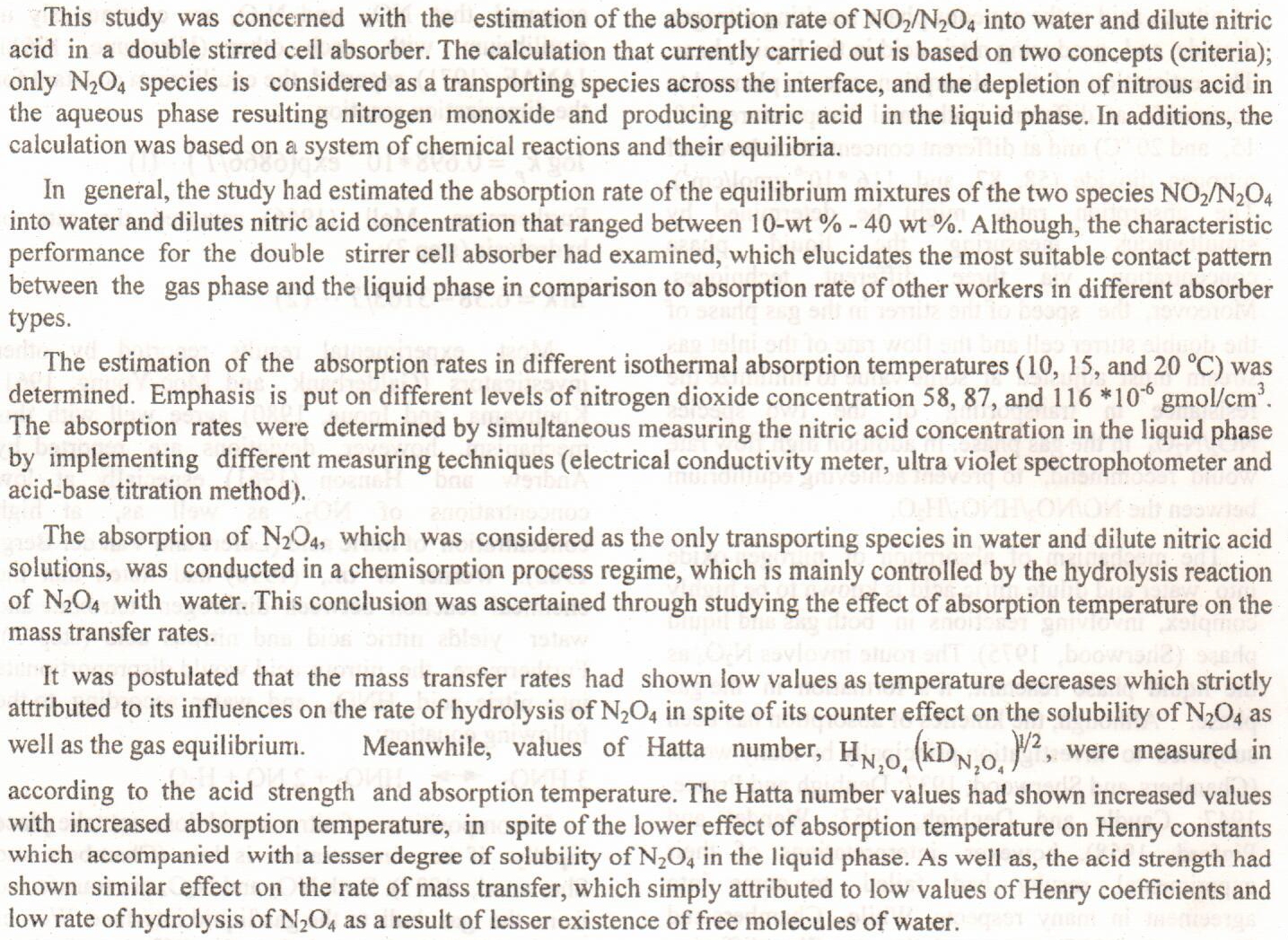
This study was carried out to measure the percentage of heavy metals pollution in the water of the Diyala river and to measure the percentage of contamination of these elements in the leafy vegetables grown on both sides of the Diyala river, which are irrigated by the contaminated river water (celery, radish, lepidium, green onions, beta vulgaris subsp, and malva). Laboratory analysis was achieved to measure the ratio of heavy element contamination (Pb, Fe, Ni, Cd, Zn and Cr) using flame atomic absorption spectrophotometer during the summer months of July and August for the year 2017. The study showed that the elements of zinc, chromium, nickel and cadmium were high concentrations and exceeded. The maximum concentration of these
... Show MoreIn this work, an enhanced Photonic Crystal Fiber (PCF) based on Surface Plasmon Resonance (SPR) sensor using a sided polished structure for the detection of toxic ions Arsenic in water was designed and implemented. The SPR curve can be obtained by polishing the side of the PCF after coating the Au film on the side of the polished area, the SPR curve can be obtained. The proposed sensor has a clear SPR effect, according to the findings of the experiments. The estimated signal to Noise Ratio (SNR), sensitivity (S), resolution (R), and Figures of merit (FOM) are approaching; the SNR is 0.0125, S is 11.11 μm/RIU, the resolution is 1.8x〖10〗^(-4), and the FOM is 13.88 for Single-mode Fiber- Photonic Crystal Fiber- single mode Fiber (SMF-P
... Show More (2)
(2)
 (4)
(4)
In this research, Artificial Neural Networks (ANNs) technique was applied in an attempt to predict the water levels and some of the water quality parameters at Tigris River in Wasit Government for five different sites. These predictions are useful in the planning, management, evaluation of the water resources in the area. Spatial data along a river system or area at different locations in a catchment area usually have missing measurements, hence an accurate prediction. model to fill these missing values is essential.
The selected sites for water quality data prediction were Sewera, Numania , Kut u/s, Kut d/s, Garaf observation sites. In these five sites models were built for prediction of the water level and water quality parameters.
 (3)
(3)
Water quality sensors have recently received a lot of attention due to their impact on human health. Due to their distinct features, environmental sensors are based on carbon quantum dots (CQDs). In this study, CQDs were prepared using the electro-chemical method, where the structural and optical properties were studied. These quantum dots were used in the environmental sensor application after mixing them with three different materials: CQDs, Alq3 polymer and CQDs and Alq3 solutions using two different methods: drop casting and spin coating, and depositing them on silicon. The sensitivity of the water pollutants was studied for each case of the prepared samples after measuring the change in resistance of the samples at a temperature of
... Show More (2)
(2)
Soil water use and water storage vary by vegetative management practices, and these practices affect land productivity and hydrologic processes. This study investigated the effects of agroforestry buffers (AB), grass buffers (GB), and biofuel crops (BC), relative to row crops (RC) on soil water use for a claypan soil in northern Missouri, USA. The experiment located at the Greenley Memorial Research Center included RC, AB, GB, and BC established in 1991, 1997, 1997, and 2012, respectively. Soil water reflectometer sensors installed at 5‐, 10‐, 20‐, and 40‐cm depths monitored soil water from April to November in 2017 and 2018. Results showed significant differences in weekly volumetric water content (VWC) among treatments for all fou
... Show More (9)
(9)
 (9)
(9)
Conducted the study of the experimental conditions of the interaction of glass the visual Alpmuth containing 15% Mall of zinc with phosphoric acid ????? various degrees of thermal and clip areas prone to interact different way turntable
 (7)
(7)
 (9)
(9)
Turbidity is a visual property of water that expresses the amount of suspended substances in the water. Its presence in quantities more significant than the permissible limit makes the water undrinkable and reduces the effectiveness of disinfectants in treating pathogens. On this basis, turbidity is used as a basic indicator for measuring water quality. This study aims to evaluate the removal efficiency of AL- Muthanna WTP. Water turbidity was used as a basic parameter in the evaluation, using performance improvement evaluation and data from previous years (2016 to 2020). The average raw water turbidity was 26.7 NTU, with a minimum of 14 NTU, with a maximum of 48 NTU. Water turbidity value for 95% of settling daily reading data was
... Show More (5)
(5)
